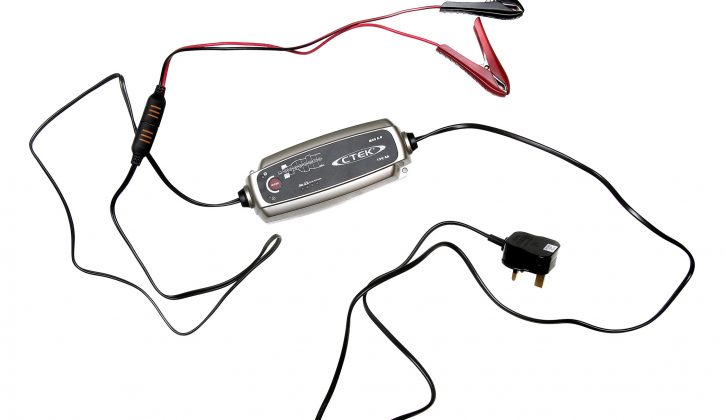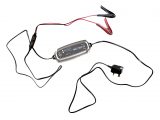Verdict
We awarded the CTEK MXS 5.0 a four-star rating because it is almost as good as the battery charger test winner, but is cheaper.
Pros
You can use the CTEK MXS 5.0 outdoors
This battery charger is good value for money
Cons
Its maximum output may be a little too slow for large leisure batteries
Are you planning to leave your caravan parked up somewhere safe over the coming winter? If so, it’s worth thinking about ways to keep the leisure battery gently topped up, to avoid having to buy a new one every spring!
Batteries have certainly improved in recent years, so they don’t need too much to keep them in good condition compared to the batteries of the past. Nevertheless if you leave a battery in a very low state of charge for a long period of time between holidays, it could suffer irreversible damage. Modern caravans make use of the leisure battery to run alarm systems and various other electronic devices. While they’re not drawing much charge individually, these things will steadily drain the battery down during any times that your caravan is laid up unused.
Fortunately, there are now many good devices on the market that act as battery chargers and conditioners, ensuring that your caravan battery stays in good shape, even when you’re not using it. The only drawback for some people is that you’ll need an electrical supply near the caravan so that you can plug the battery charger in. Also, it’s quite likely that the weather will be damp and cold, so you’ll be needing a system that can withstand outdoor use, perhaps with just the protection of a battery box.
It’s particularly tricky if you’ve chosen to park your caravan up in a secure storage facility when you’re not using it, because these places seldom have an electric hook-up handy! Luckily modern smart chargers are designed to cope with this common situation. The challenge posed is that if your battery has run down to a low ebb for some time, it will need a power boost to dissolve damaging suiphation from the battery’s plates. If you catch it in time then the deposits won’t become permanent and wreck the battery’s effectiveness.
During our test of eight modern battery chargers and conditioners for caravan leisure batteries we were also looking for a good lead length and an informative display to tell the caravan owner how much battery power remains, and whether it is in a maintenance conditioning cycle.
We also looked at the output coming from each battery charger. If you have a decent 150 Ah leisure battery, it may be that it takes a long time to charge up using a low-output charger. However, a battery will draw only what it needs. So it may only draw 10-15 amps if the leisure battery is of average size and has not yet run completely flat. In fact, as it charges, it may draw even less power, dropping down to 6 Amps or less.
We tested eight battery chargers and conditioners, the CTEK MXS 7.0, CTEK MXS 5.0, Ring SmartCharge+ 12, Ring SmartChargePro 25, Draper 11953, Sealey Autocharge10D, Draper 07265 and Clarke CC120. The chargers vary in price from £37 for the Sealey Autocharge10D to £190 for the Ring SmartChargePro 25.
Here’s our test report and verdict on the CTEK MXS 5.0 battery charger, priced at a very reasonable £60 at the time of our test.
In essence the all-conquering MXS 7.0 battery charger’s little brother, the 5.0 offers many of the same benefits. Its fully sealed construction allows use in sheltered outdoor locations — caravan lockers and beneath closed bonnets spring to mind — and the unit both charges and conditions.
One handy feature omitted from this cheaper CTEK, though, is the ability to work as a 12V power source.
The MXS 5.0 uses the same sophisticated charging cycle as the MXS 7.0 and has the same modes for reconditioning and different battery technologies. However, its maximum output may be a little too slow for large leisure batteries.
Its maximum output may be a little too slow for large leisure batteries









